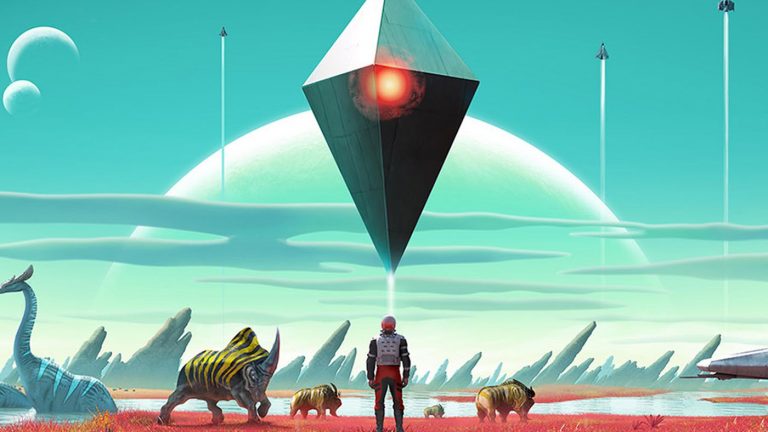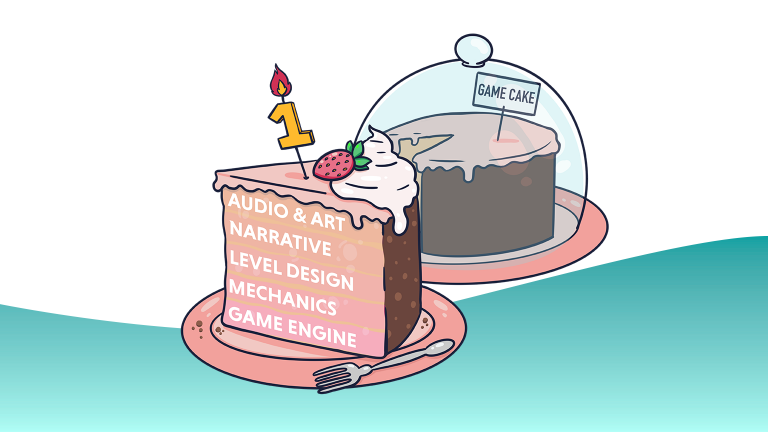The Problem With Defining AAA Games (and How to Fix It)
Note: this post was co-authored by Martin Mittner
AAA games make up the minority of games released each year, but receive the vast majority of news coverage, consumer hype, and cultural mindshare. Because of that, you’d assume that anyone would be able to definitively say which games are and are not AAA, right? Unfortunately, that’s not the case. The reason is that, traditionally, the thing that defines a AAA game is its budget. But, a game’s development budget is rarely disclosed by its creators. For that reason, we’ve tried to create better criteria for defining whether a game is or is not AAA. But first, let’s talk about the existing definitions and why they no longer work.
- AAA Games Now and in the Past
- Why AAA Needs a New Definition
- Murky Budgets
- AAA Does Not Indicate the Quality of a Game
- The Rise of Free-to-Play Games
- The Rise of Mobile Games
- A Better Definition for AAA
- Criteria Explained
- Development and Marketing Budget That Exceeds $25m
- Critically Well-Received (Eg 70+ on Metacritic)
- High Level of Polish and Low Number of Bugs
- Has 20+ Hours of Gameplay
- Successfully Makes Full Use of the Latest Technology at Release and/or Pushes Technical Boundaries
- Hyper-Realistic Graphics at Release
- Made by a studio that has created a previous AAA game
- Criteria We Chose Not to Use
- What Is the Purpose of This Evaluation?
AAA Games Now and in the Past
The current definition for AAA games is actually a little hard to pin down. The most widespread definition is, “A game with an extremely large budget.” Exactly how large is not clear but most AAA budgets are counted in at least the 10s or even 100s of millions of dollars.
With that said, we’ve had conversations with multiple industry professionals who have strongly held personal definitions that do not include budget. Some of the more common are:
- A console or PC game that is extremely commercially successful (i.e. a game that makes a lot of money).
- A game that is made by a large and well-known developer or publisher known for making AAA games (e.g. Ubisoft, EA)
There are also some disqualifiers aside from budget that many feel strongly about as well. They include:
- AAA games can never be primarily or originally developed for mobile.
- Up until recently, F2P games could not be considered AAA.
As you can see from the above lists, the definition of AAA is far from clear cut and many people’s personal definitions vary and contain exceptions and loopholes. At the end of the day, many industry professionals agree that it often comes down to “you know it when you see it.”
That would be fine if AAA were an industry insider term, as it was in the ’90s. However, that’s no longer the case. It’s now a consumer term that is often used in public-facing advertising. And no matter how widespread it becomes, you can’t expect the average 65-year-old buying a Christmas present for their grandchild to ‘Know it when they see it.’ in the same way that an industry expert would.
Why AAA Needs a New Definition
Even once you’ve pinned down exactly what AAA means, there are still a whole bunch of other issues which warrant some unpacking.
Murky Budgets
Budget being the main qualifier for whether a game gets labeled as AAA would be fine if 2 things were true:
1 – The threshold for a AAA budget was widely known and agreed upon.
2 – Game developers and publishers openly disclosed how much a game costs to make.
Unfortunately, neither of these things is true. No one can agree what size of budget makes a game AAA ($10M? $50M? $100M?!) and even if they could, the price of game development changes all the time. The average AAA game costs many times more to create today than it did 2 decades ago and will likely cost even more 2 decades from now.
As for finding out how much a game costs, the only ways to do that are to sleuth through investor calls, interviews, and press releases, or go to a research firm and pay them a bunch of money. If you’re lucky, you’ll be able to weed out some vague hints. Another tactic would be to find everyone who worked on the game, how long it took to make it, and then do some napkin-math based on the average salary of all the roles involved. Except, true AAA games often have huge numbers of people working on them with multiple teams, co-dev studios, and outsourcers coming on and off the project, depending on what is needed at any given time. Not to mention that the cost of labor is only one part of the equation. There are a whole bunch of other costs such as licensing of tech, distribution, and marketing that can be just as important to the success of a game (arguably more so when it comes to marketing). At the end of the day, figuring out how much a game cost to create can be almost impossible. Even those expensive research firms are just making educated guesses.
AAA Does Not Indicate the Quality of a Game
When taken on its own, the term AAA is clearly meant to signify quality. There are two associations that such a term brings to mind. The first is the US academic grading system in which an A (or A+) grade is the highest grade one can achieve. The second is a financial term in which AAA is the highest rating that can be given to bonds by credit rating agencies. AAA bonds are considered to be the most secure and least likely to be defaulted upon.
In both cases, an A or AAA grade is meant to imply that something is at, or close to, the highest possible quality. That is clearly an association that developers and publishers are trying to capture when they advertise their games as AAA.
However, a budget-based definition makes no allowance for quality. Just because a game has a large budget does not mean it will be good. And there have been some notable games like Aliens: Colonial Marines and Tony Hawk’s Pro Skater 5 that have proven the association to be far from reliable.
Even if you tried to argue a correlation between budget and how good a game ends up being, the truth is that quality is no longer the main consideration for many AAA developers. Profitability is. Developers often make decisions that help a game be appealing to as wide a group of people as possible, or that makes it easier to monetize, at the expense of making it fun. One example would be EA openly saying that linear single-player games no longer make financial sense despite that genre consistently spawning some of the most critically acclaimed games each year.
The Rise of Free-to-Play Games
For a long time, a game being sold for full price on release day was a prerequisite for many people to consider it AAA. This is something that now makes almost zero sense and will only become harder to justify as time goes on.
Free-to-play (F2P) is pretty closely tied to games as a service (GaaS) and if budget is the primary decider of a game’s AAA status, then the budget of some Free-to-play games as a service titles blow many traditional AAA games out of the water. Both the profitability and the money spent on continuing development and marketing of games like Fortnite and Destiny would put almost any traditional AAA game to shame.
Not to mention that the increased prevalence of subscription services like Xbox Gamepass blurs the lines even when it comes to games that would usually cost full-price at release.
The Rise of Mobile Games

“A mobile game cannot be AAA.” That’s a sentiment I’ve heard more than once from industry professionals I respect a lot. And honestly, it’s a common one. Historically there has been a huge gap in both capability and perception between the mobile game space and the PC/console space. However, that gap has been getting smaller every year and I would argue that there have been some major bridges built across it.
Firstly, if we’re talking budget, we have to acknowledge that while most games are cheaper to produce on mobile, if you include the ongoing development of games as a service (GaaS), there are some whose development budgets rival and even exceed those of AAA games on PC/console. And if you stretch a little further to include marketing budgets (which are often included when talking about traditional AAA games) then mobile game budgets can easily push into the 100s of millions.
Then you have the games themselves. When measured against the Uncharted’s and the Call of Duty’s of the world, most people would not consider match-3 and slot-spinning games to be in the same league. But what about if you can play a AAA console game on your phone and have almost the exact same experience? Well, that’s the case with Genshin Impact, a game that cost over $100m to make and that you can not only play on mobile but which can also be played with your PC/console friends at the same time. Similar claims can be made for Fortnite as well. And we are only at the beginning of what looks to be a growing trend as more and more large AAA franchises like Call of Duty and FIFA are seeing mobile releases that rival their flagship releases of only a few years ago.
The gap in both quality and compute power is only going to continue shrinking. And when you consider the rise in technologies that let you stream high-quality gameplay to your phone from the cloud, and then even stream that from your phone to a TV, all while connecting a controller to play with, and the lines start to get real blurry.
A Better Definition for AAA
Our solution to the aforementioned problems is to instead use a points-based system. There are 7 different qualifying criteria with a possible 10 points that can be awarded across them. A game is required to score 7 out of those 10 possible points to be considered AAA. If it instead scores a 5 or a 6, it is considered a AA game (a term you can learn about here), Any lower than that and it fails to reach AA status and instead is considered ‘just a game’. Alternatively, if a game is critically well-received and highly polished but does not meet the requirement for a AAA, it might be more appropriate to see if it qualifies as III.
| Criteria | Score |
| Development and marketing budget that exceeds $25M | 2 |
| Critically well-received (eg 70+ on Metacritic) | 2 |
| High level of polish and low number of bugs | 2 |
| Has 20+ hours of gameplay | 1 |
| Successfully makes full use of the latest technology at release and/or pushes boundaries | 1 |
| Hyper-realistic graphics at release | 1 |
| Made by a studio that has created a previous AAA game | 1 |
Let’s take a look at what some popular games score when run through this evaluation:
Example Games (Score)
- Last of Us 2 (10)
- Checks all boxes
- Hearthstone (9)
- Does not have hyper-realistic graphics
- GTA V (8)
- Was buggy on release and continues to be to a lesser extent
- Genshin Impact (8)
- No history of previous AAA titles
- No hyper-realistic graphics
- Cyberpunk 2077 (7)
- Buggy
- Attempts to push boundaries and tech but fails
Criteria Explained
We tried to make each criterion self-explanatory and easy to understand. Even so, there is still some nuance and subjectivity so we expand on each one below to clarify them while also addressing some edge cases.
One thing to note, our intention with the choices we made was not only to indicate what we think AAA should be but also to reflect what they currently are. If our evaluation failed to identify the most widely accepted AAA games, it would not be fit for purpose. Similarly, if the evaluation were too easy and allowed the majority of games to qualify as AAA, it would also be inadequate. Our approach was to try to accurately reflect the market as it currently exists while opening the door to some more deserving games and also rejecting some big-budget games of poor quality.
We also intend that a game can be constantly re-assessed with this evaluation. A game can gain and lose points as it is improved (or in some cases, worsened) with subsequent updates. This was important to us because it makes room for games that follow the games as a service (GaaS) model to ‘earn’ their AAA status over time. The only points that cannot be changed after release are the ones associated with pushing technological boundaries and with hyper-realistic graphics. Those points are based on the state of the game at release (unless there is a particularly notable reason why an exception should be made). The reasoning for each is explained below. To a lesser extent, the requirement “Made by a studio that has created a previous AAA game” also only takes into account a studio’s previous releases but can be awarded later if one of those previous games is reassessed and earns its status as a AAA game.
Development and Marketing Budget That Exceeds $25m
While we have written at length about how budget is a poor metric by which to judge AAA games on its own, it’s impossible to discount it completely. The fact is, budget is a reality of the AAA space and will continue to be so for the foreseeable future.
We chose a budget level that is lower than that of many contemporary AAA games while still being large enough to exclude any solo developers and small indie teams. Both development and marketing spend should be considered when judging this metric. As with most of our criteria, this is open to continuous reevaluation. Ongoing development and user acquisitions funds can qualify a game as AAA long after release.
There are some edge cases where a game with a budget lower than $25M should still be awarded these points. One is for an annual title or follow-up game that reuses a large number of tech and assets from a previous game in the franchise. Without being sure of the budgets involved, games like Spiderman: Miles Morales and an annual sports title like FIFA could be candidates for such an exception.
Critically Well-Received (Eg 70+ on Metacritic)
We believe that quality should absolutely be a consideration when deciding if a game qualifies (or more realistically, is disqualified) as AAA. A game that is poorly made or is not fun to play should have a harder time being considered AAA.
We are aware that judging if a game is well received is not quite as straightforward as it may sound. We chose a 70+ on Metacritic to be our line but the truth is that there may be cases in which using something like Rotten Tomatoes or even common sense may be more appropriate. One example is if a game has been judged overly harshly at release due to something which later gets fixed such as a game-breaking bug.
When a title has been released across multiple platforms and receives different scores for each but the disparity is low, an average should be used. In the case where the difference is large (more than 20 points) then it is possible for a game to be considered AAA on one platform (such as PC) but not on another (like Switch). This can happen when a port is handled poorly or when a game is not suited to run on certain hardware.
High Level of Polish and Low Number of Bugs
This may be both the most subjective and hardest to quantify part of our evaluation. Whether a game looks and feels polished can be a matter of personal opinion and gameplay experience. A high level of polish applies to all areas of the game including art, audio, design, and the underlying technology used.
It is possible (and somewhat common) that a game contains bugs and not be well-polished at release but then go on to have those issues corrected post-launch.
This point is also somewhat dependent on the type and genre of the game. The odd graphical glitch, or a bug that makes it difficult or impossible to interact with an object, is much more forgivable in a large open-world game with 200+ hours of gameplay than it would be in, say, a short linear platformer.
There are some things that should be considered an instant fail for this section:
- Prevalent bugs that permanently wipe player progress
- Prevalent bugs that make it impossible to complete the game
- Connectivity issues in a multiplayer game that leads to frequent disconnects
- Excessive server downtime on games that require an internet connection
- Easily encountered cheats, hack, or exploits that can ruin the balance of the game
Has 20+ Hours of Gameplay
This is probably the most straightforward requirement. It’s worth noting that for linear single-player games, having multiple difficulty modes with no significant changes to the game outside of balancing does not count as extending the length of a game. Multiplayer games with limited content such as a shooter with only 4 maps can count as having more than 20 hours of gameplay. As long as there are elements that provide a significantly different experience from one game to the next or a noticeable sense of progression. Examples being different game modes and RPG-style upgrade mechanics.
Successfully Makes Full Use of the Latest Technology at Release and/or Pushes Technical Boundaries
This criterion is difficult to judge. When uncertain, you should consider the barrier for success to be quite high here. It’s also worth noting that this is one of two criteria in which we included the words “at release”. The reason being that the goalposts continually move when it comes to pushing technological boundaries. Most tech considered impressive now will likely not be 2 years from now.
Some examples that were considered impressive when they were first used:
- Use of new or novel hardware such as VR, or AR, in a way that enriches the gameplay experience.
- New or novel delivery methods such as cloud-based streaming.
- Impressive networking architecture that smoothly enables otherwise impossible features such as 100+ person multiplayer matches.
- A large and detailed open-world game with zero loading times (on hardware for which this is not expected)
Hyper-Realistic Graphics at Release
This point sparked the most debate internally when it was proposed. The fact is, we do not consider hyper-realistic graphics to be the mark of a good game or even to be a desirable feature in a game. We do, however, acknowledge that an overwhelmingly large number of the AAA games that come out each year have high-fidelity, realistic graphics. This is partly because such graphics are expensive to make and only large-budget games can afford them.
This is the second of our criteria that includes the words “at release” While evaluation as a whole is meant to allow a game to be continually reassessed, this criterion does not allow for that. The reason is that graphics advance so rapidly that any game which was released more than a year or two ago would no longer be considered to have hyper-realistic graphics, causing scores of games to be continually losing their AAA status. It’s also unlikely that a game would significantly improve its graphics after release to the point where they would become hyper-realistic when previously they were not. The reason being that such improvements normally require deep foundational changes that are not practical for an already released game.
This criterion is also heavily dependent on genre and game type. A grand strategy game may appear to have hyper-realistic graphics when surveying the battlefield from afar but would not hold up if you try zooming in to an individual soldier. That’s fine, it would be unrealistic to expect such a game to render out thousands of units with the same detail as a character from a Naughty Dog game.
Hyper-realistic graphics are also likely to become less important over time as the accessibility of new tools and tech makes achieving it easier for even small teams. Many would argue (and we would certainly be among them) that a strong and cohesive art style is ultimately more important than shiny graphics that make you go ‘Ooooo” at release, but which look dated and unimpressive a few years later. If you want an example of that being the case, look at pretty much any game released by Nintendo.
Made by a studio that has created a previous AAA game
This is another point that does not reflect our personal views for what the market should aspire to be but does aim to accurately reflect how it exists today. There is a large subset of people who basically see AAA games as, “A game made by Ubisoft, EA, or (insert favorite large publisher)”. The fact is that a developer or publisher that has a track record of creating AAA games is a pretty reliable signifier of whether its next game will be AAA. Therefore we decided to take it into consideration for our evaluation.
Note that while this does only take into account games that were released previously, it is possible for a studio’s previous game to ‘earn’ AAA status due to it being continuously updated and supported. Meaning the point for this qualifier can be awarded after release.
Criteria We Chose Not to Use
We spent a lot of time trying to make our evaluation both robust and lightweight. The truth is that we could have made it much more accurate by increasing the maximum number of possible points to 100 (or more) and adding in a bunch of extra qualifiers. But that would have made the evaluation unwieldy and difficult to use. With that said, we did consider a number of different criteria that we decided against using, We’ve listed some of them below along with why we omitted them.
Team Size
Most AAA games are made by large teams and team size was one of the earliest qualifiers we considered. In the end, we decided against it because team size is more or less a function of budget and would have been somewhat redundant. That being said, we did use it as a disqualifying item on our III evaluation.
Retail Price
Traditionally, most AAA games have been sold at full price on release. We decided against using this as a benchmark as it goes against our intention of encouraging F2P GaaS to be considered AAA.
Platform
Most people would consider PC and console games more likely to be AAA than those on mobile (if they would even consider mobile at all). We believe that there are already many examples of AAA mobile games and are only likely to be more as time goes on So in aid of future-proofing our evaluation, we decided against using platform as a qualifier.
Commercial Success
Commercial success is a reasonable criterion but we chose to use critical success instead as many developers and publishers can be almost as secretive about how much a game earned as they are about how much it cost to make. Also, due to the current boom in hyper-casual mobile games. If earning was a major decider then there would be a crazy amount of mobile games qualifying.
Star power
Due to the trend of recent AAA games using mainstream celebrities in their games (Keanu Reeves in Cyberpunk anyone?), the idea of taking star power into account was floated briefly. In the end, however, this is just another function of developers with massive budgets trying to find a way to spend all their money.
What Is the Purpose of This Evaluation?
Our hope for this evaluation is to spark interesting thoughts and conversations while, hopefully, bringing some attention to a few games that some people would otherwise dismiss. We would love it if people started using our scoring system regularly (and please let us know if you scored a game you made or love), but ultimately, the act of making it was satisfying enough. It helped us look at some of our favorite games in a new light and reassess some preconceptions we had about the industry.
Why not try scoring some games yourself? Or better yet, come up with your own system for scoring games. if you’re lucky, you’ll have as much fun as we did.
Please let us know what you think of our evaluation, and share it if you got any value out of it.






